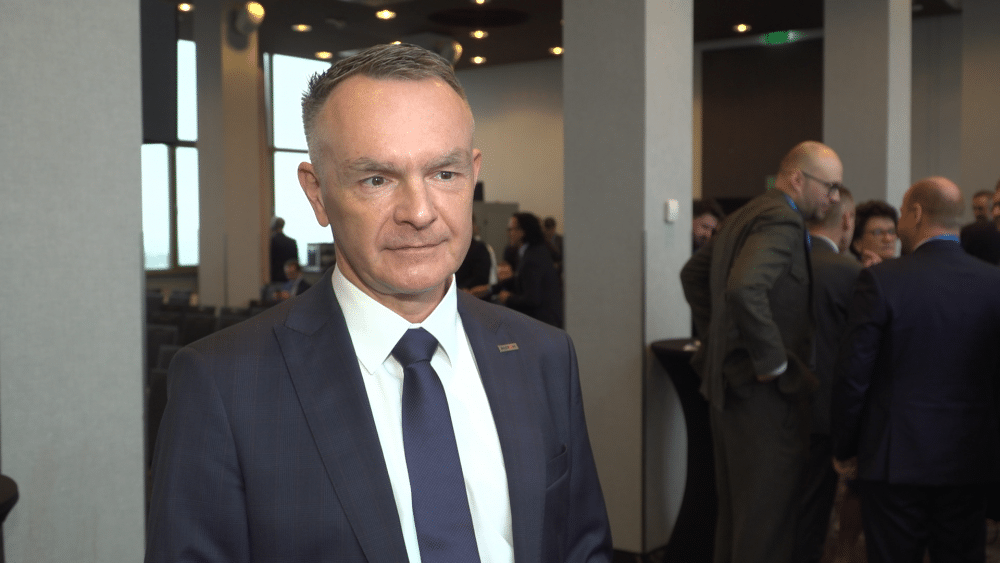Companies from various segments of the railway market are eagerly waiting for the money from the National Recovery Plan to finally hit the market. However, the deadline for spending part of these funds is already in 2026. Meanwhile, the industry, which has been disrupted over the past three years, may struggle to deal with the accumulation of new orders and carry out all investments simultaneously and on time. “We are already three years behind – for what other EU countries had in total six years, we only have three left. These are time-consuming procedures, it can’t be done in a year and a half,” says Sławomir Cyza, President of Alstom Polska.
“The KPO funds, which, as we know, are already available in Poland after a long break, will have a very positive impact on the rail market and passenger transport. For the last three years, nothing happened in this regard, but it should change a lot soon,” says Sławomir Cyza to Newseria Biznes Agency.
Investments in railways are heavily dependent on EU funds. Any delays or shifts in their expenditure cause disturbances in the market due to a lack of contracts, which in turn translates into the financial problems of companies carrying out railway investments, rolling stock manufacturers, and suppliers of materials and products for railway infrastructure.
In Poland, this situation occurred over the past three years, and the cause was a dispute over the rule of law between the government of the United Right and the European Commission, which blocked the disbursement of funds from the National Recovery Plan worth 59.8 billion euros – 25.3 billion euros in grants and 34.5 billion euros in preferential loans. However, at the end of February, the new coalition government reached an agreement with Brussels, which decided to unlock funds from the National Recovery Plan and cohesion policy funds for Poland (a total of approximately 137 billion euros).
Companies from various segments of the railway market are eagerly awaiting these funds to hit the market (eight projects submitted to the National Recovery Plan by PKP Intercity, the largest national carrier). In the National Recovery Plan, the “green, smart mobility” component accounts for 21% of the entire budget and is its second-largest component (after the “green economy and energy efficiency”). Some of this money is intended to increase the competitiveness of the rail sector, purchase rolling stock, and modernize railway lines. However, the fact that the deadline for spending part of these funds expires in 2026 creates a certain problem.
“These are time-consuming procedures and the key issue from the point of view of manufacturers as well as carriers is to what extent these funds need to be used. As we know, they have to be settled by the middle of 2026. And we are already three years behind. This is very important from the manufacturer’s perspective because the tender procedure takes quite a while, these are public orders, then the production itself, which depends on the quantity, and the homologation. You can’t do it in a year and a half,” says the president of Alstom Polska. “This situation applies not only to Poland, but we are – along with Hungary – in the worst situation of all EU countries.”
The government recently announced that it expects payments from the first funding request from the National Recovery Plan in April. With this first payment, Poland will receive over 6.3 billion euros (31 billion PLN) – including nearly 2.7 billion euros from the grant part and 3.6 billion euros from the loan. Currently, due to the delay in implementing the National Recovery Plan, the government is also working on its revision, and the new version of the National Recovery Plan is planned to be formally passed to Brussels next month. Poland wants to point out during discussions with the European Commission the reforms and investments that can be modified, and possibly propose the relocation of some funds.
Such a solution would be partly beneficial for companies from the railway sector, which are afraid that the release of EU funds will lead to an accumulation of new orders, but the industry, shook up over the past three years, will struggle to carry out all these investments simultaneously and on time.
“It’s not just about activating funds, getting contracts and committing to produce, because then everyone will have a problem – manufacturers who won’t be able to deliver on their contractual obligations, and carriers who won’t receive their vehicles. Penalties will start to accumulate, and the outcome will be that everyone will lose at the national level, as we simply won’t get or partially recover from these funds that were available,” says Sławomir Cyza.
He emphasizes that upcoming railway investments must be well-planned and complement each other, including not only purchasing new rolling stock, but also modernizing lines, safety systems, and train traffic control.
“Adding more trains to existing infrastructure will not result in faster traffic. It will just result in more trains. That’s why it’s about developing rolling stock, delivering new vehicles, and at the same time developing infrastructure, building new lines. And that’s something we’re trying to convince people about, among other things based on our experiences with other countries, showing that we really need high-speed rail in Poland. This is something we lack in our country compared to other, larger EU countries,” notes the president of Alstom Polska.
